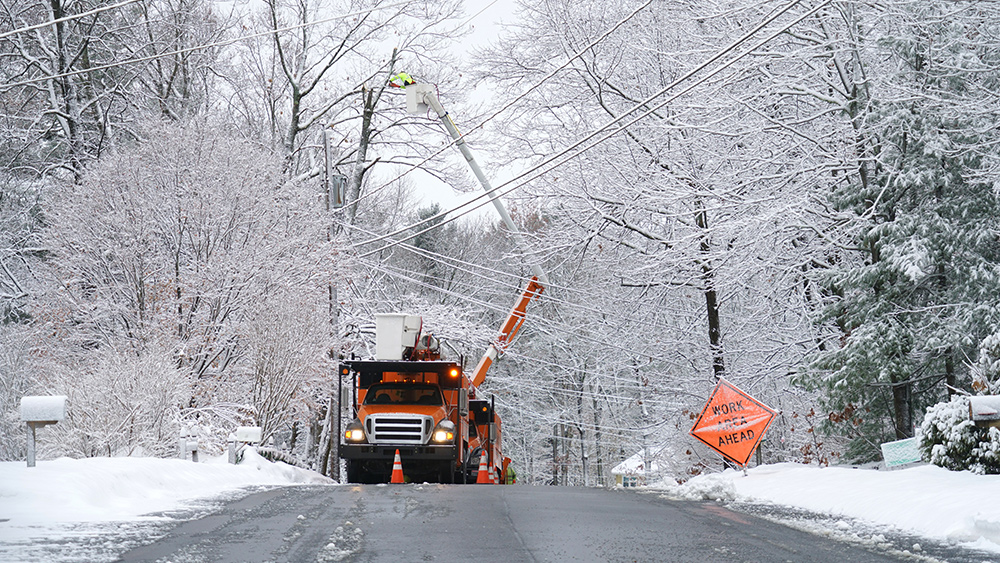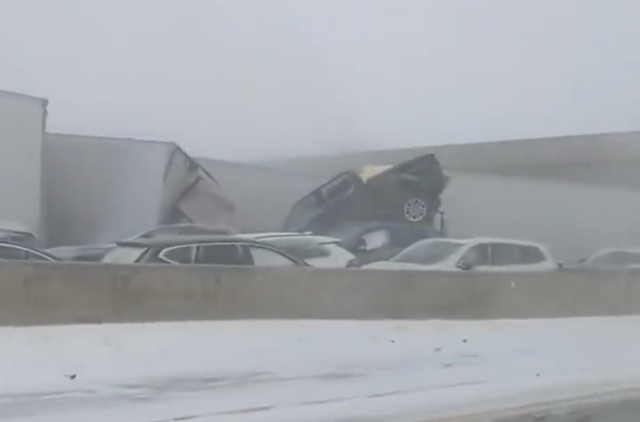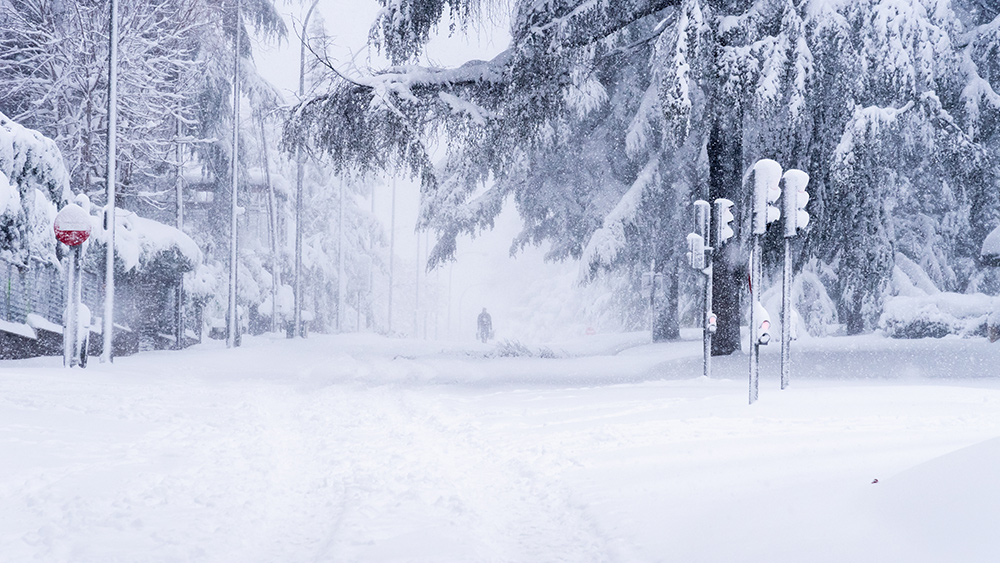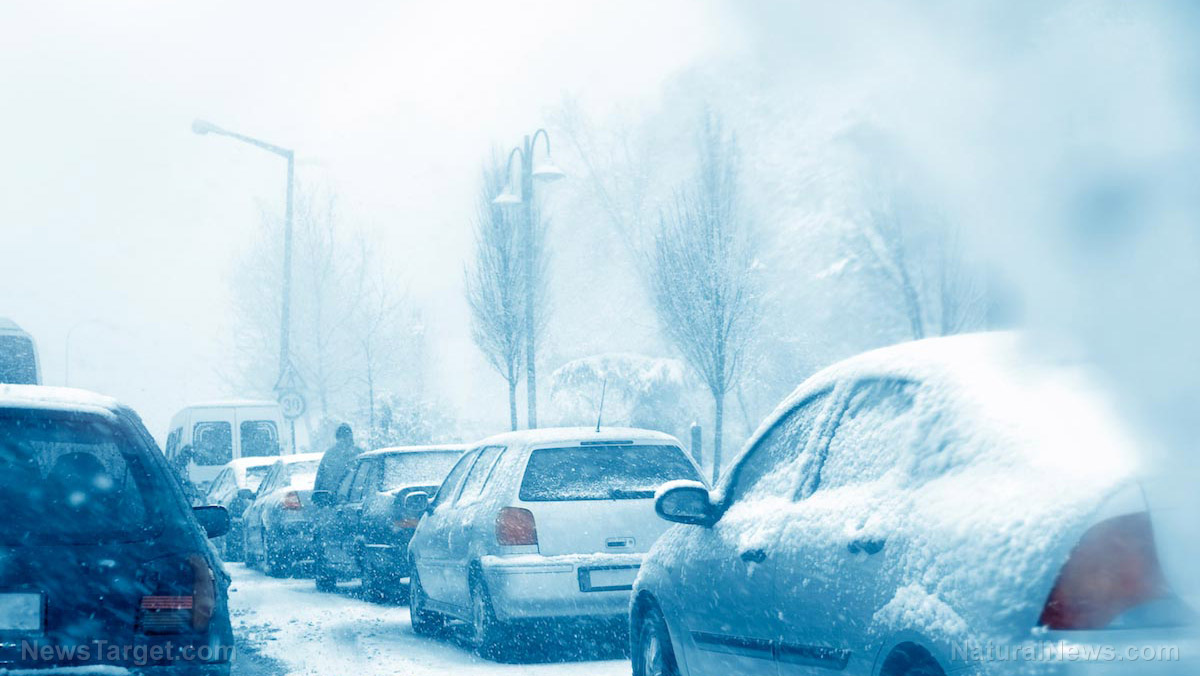
- A massive polar vortex is heading toward the U.S., bringing extreme cold that could make January 2025 the coldest month in over a decade. The National Weather Service (NWS) warns of frigid temperatures affecting millions from the Northern Rockies to the East Coast, with wind chills below zero in at least 30 states and freezing conditions reaching as far south as the Gulf Coast.
- The polar vortex is a natural atmospheric phenomenon that strengthens in winter, trapping cold air over the poles.
- The eastern U.S. will bear the brunt of the cold, with temperatures staying below average for much of January. Risks include frostbite, hypothermia, power outages, burst pipes and transportation disruptions.
- This extreme cold follows an unusually warm December, highlighting the volatility of winter weather.
- The NWS urges Americans to prepare by checking forecasts, dressing in layers, ensuring heating systems work and assembling car emergency kits. Vulnerable populations, including the elderly and homeless, are at heightened risk.
A massive polar vortex is barreling toward the United States, bringing with it a bone-chilling arctic blast that could make January 2025 the coldest month in over a decade. The National Weather Service (NWS) warns that the frigid air will sweep across the country, affecting millions of Americans from the Northern Rockies to the East Coast.
With wind chills plunging below zero in at least 30 states and freezing temperatures reaching as far south as the Gulf Coast, this polar vortex could pose serious risks to health, infrastructure and daily life.
The polar vortex, a term that has gained notoriety in recent years, is not a new phenomenon. It is a large area of low pressure and cold air that swirls around the Earth’s poles, typically confined to the Arctic during winter.
When the vortex weakens or breaks apart, as it is doing now, it allows icy arctic air to spill southward, engulfing regions unaccustomed to such extreme cold.
This time, the vortex is expected to unleash multiple rounds of freezing air across the eastern half of the U.S., with the first wave hitting the Northern Plains and Midwest by midweek and reaching the Northeast by New Year’s Day.
What exactly is a polar vortex?
Polar vortex is a natural part of Earth’s atmospheric system. It exists year-round but strengthens in winter, acting like a giant atmospheric freezer that keeps the coldest air locked over the poles.
The "vortex" refers to the counter-clockwise flow of air that helps maintain this icy containment.
However, when the vortex weakens – due to disruptions in the jet stream or other atmospheric changes – it can stretch or split, sending arctic air southward into regions like the United States, Europe and Asia.
This is not the first time that the U.S. has faced such a chilling event.
In January 2014, a polar vortex brought some of the coldest temperatures in nearly 20 years, affecting almost 187 million Americans. Wind chills stretched from Montana to Alabama, with temperatures plummeting to -36 F in Crane Lake, Minnesota. The event caused widespread power outages, transportation chaos and tragically, more than 20 deaths.
The coming deep freeze
This year’s polar vortex is shaping up to be similarly severe. The NWS predicts that the eastern half of the U.S. will bear the brunt of the cold, with temperatures expected to remain below average for much of January.
Wind chills in the Midwest could dip well below zero, while even the Southeast—including parts of Florida—could experience freezing conditions. Cities like Washington, D.C., Philadelphia, Atlanta and Raleigh, North Carolina, which rarely see such extreme cold, are bracing for temperatures not felt in years or even decades. (Related: CLIMATE MISINFORMATION COMPLEX: Climate alarmists proven wrong again with arctic ice increasing at a whopping 26 percent since 2012.)
For example, Washington, D.C., hasn’t seen temperatures drop below zero since January 2019, while Philadelphia hasn’t experienced such cold since 1994.
Atlanta, a city that is accustomed to mild winters, has only dipped below zero three times since 2000. These regions, along with others across the country, are ill-prepared for the kind of cold that’s coming.
Dangers of the deep freeze
The dangers of this polar vortex cannot be overstated. Prolonged exposure to such extreme cold can lead to frostbite, hypothermia and even death. Vulnerable populations, including the elderly, homeless and those without adequate heating, are at particular risk.
Hospitals and emergency services are likely to see a surge in cold-related illnesses and injuries.
Beyond the human toll, the cold will strain infrastructure. Power grids, already under pressure from increased heating demands, could face outages, leaving thousands without electricity in freezing conditions.
Water pipes may burst, causing costly damage to homes and businesses. Transportation networks could grind to a halt as icy roads and rail lines become treacherous.
The cold will also bring significant snowfall to many areas. The Appalachians, Ohio Valley, Great Lake, and Northeast are expected to see heavy snow, while parts of the Southern Plains and Southeast could experience rare winter storms.
A fast-moving system early next week may bring snow to the Midwest and severe thunderstorms to the South, with some snow reaching the mid-Atlantic.
Preparing for the cold
As the polar vortex descends, preparation is key. The NWS urges Americans to check local forecasts regularly and take steps to protect themselves and their homes. Dressing in layers, limiting time outdoors and ensuring heating systems are in working order are essential.
Car emergency kits should include blankets, food, water and a flashlight in case of breakdowns or accidents.
For those in regions unaccustomed to such cold, the risks are even greater. Many homes in the South, for example, lack the insulation needed to withstand freezing temperatures, and residents may not have the proper clothing or supplies to stay safe.
A grim reminder of 2014
The looming polar vortex is a grim reminder of the 2014 event, which left a lasting impact on the nation. Then-New York Gov. Andrew Cuomo declared a state of emergency in 13 counties, while schools, businesses and transportation systems shut down across the country.
The economic toll was significant, with billions lost in productivity and repairs.
For 2025, the stakes are just as high. With multiple rounds of arctic air expected to sweep across the eastern U.S. throughout January, the cold could linger for weeks, amplifying its effects.
As the polar vortex approaches, it's crucial to take it seriously. While the term may sound dramatic, the dangers it brings are very real.
Extreme cold is not just an inconvenience – it's a threat to life and safety. By staying informed, prepared and vigilant, Americans can weather this icy onslaught and emerge on the other side unscathed.
But one thing is certain: January 2025 is shaping up to be a month that many will remember—not for its snowmen or winter wonderlands, but for its biting, relentless cold. Stay warm, stay safe and brace yourselves. The polar vortex is coming.
Go to Climate.news for more updates about the polar vortex and other weather-related stories.
Watch the video below to learn more about the polar vortex.
This video is from the ADAPT2030 | Civilization Cycle channel on Brighteon.com.
More related stories:
GLOBAL FREEZING? Surface temperatures in frigid Greenland have been DROPPING for 20 years.
If global warming is real, then why are the coldest areas of the world getting EVEN COLDER?
Sources include:
Please contact us for more information.



















